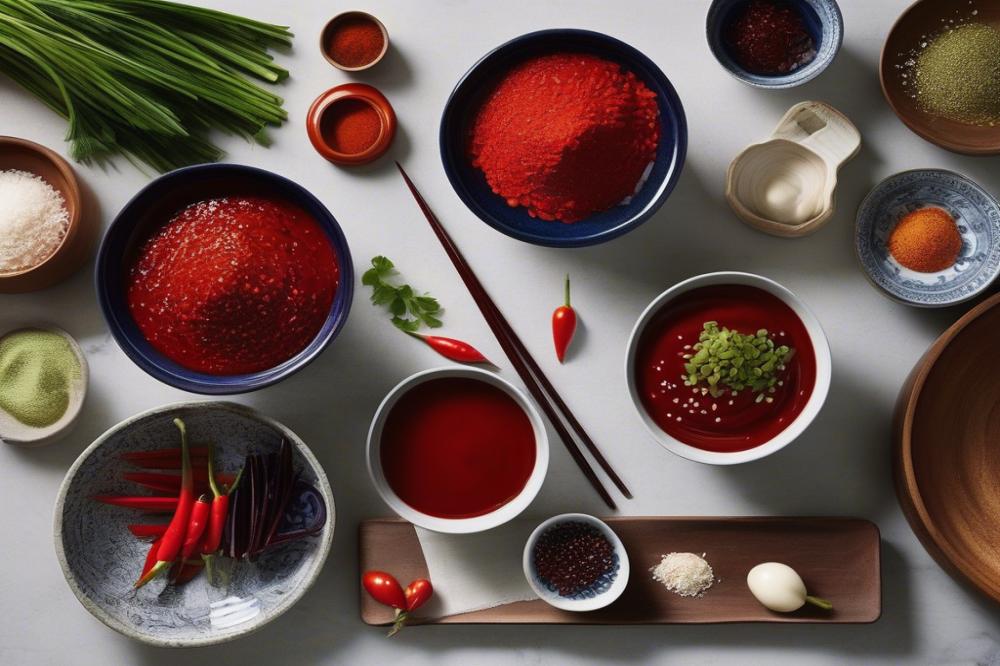Understanding the Essence of Gochujang
Korean cuisine is renowned for its bold flavors, and at the heart of this rich tapestry lies a staple ingredient: Gochujang. This fermented chili paste stands out for its ability to elevate dishes with its deep umami flavor. It is not just a condiment; it plays a crucial role in shaping the profile of many traditional recipes.
The versatility of this spicy condiment cannot be overstated. Chefs and home cooks alike have discovered that it enhances everything from stews to marinades. Adding just a spoonful can transform a mundane meal into something extraordinary. While many enjoy store-bought versions, there is a growing trend towards homemade gochujang. People are drawn to the process of crafting their own chili paste, eager to customize ingredients and flavors to their liking.
Creating your own version allows you to embrace the fermentation process, which is truly an art. The blend of chili powder, glutinous rice, and fermented soybeans creates a unique taste. Mastering how to make this beloved chili paste can be a rewarding experience. As more individuals seek to explore Korean cooking, understanding this cornerstone ingredient enhances the culinary journey. Whether you are a seasoned chef or a beginner, making your own Korean Chili Paste can be an exciting project.
Understanding Gochujang
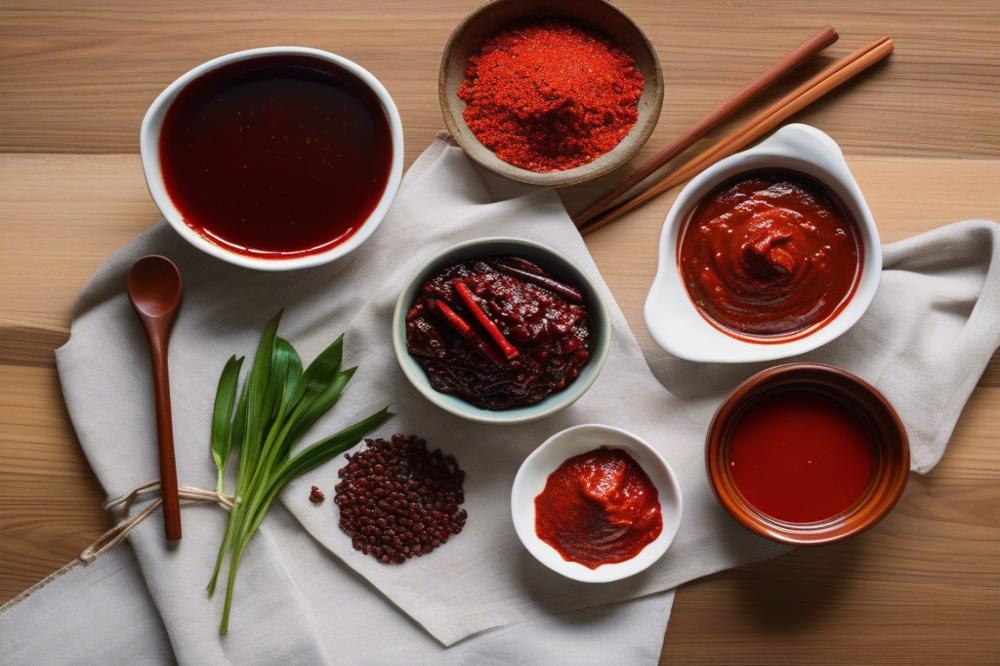
Gochujang is a staple in Korean cuisine. This fermented chili paste has deep roots in Korean cooking and culinary history. Its origins date back to the 18th century and possibly even earlier. Traditionally, it was made by combining red chili powder, glutinous rice, fermented soybeans, and salt. Over time, this mixture evolved into the rich, spicy condiment we know today. Each ingredient contributes to the overall flavor, creating a complex taste profile that balances heat, sweetness, and umami.
Many traditional recipes in Korean cooking utilize this spicy paste. It is often used in stews, marinades, and as a dip. People enjoy adding it to dishes like bibimbap or Korean tteokbokki. Gochujang brings warmth and depth to meals, enhancing them with its bold flavors. It is not merely a spicy condiment; it plays a vital role in the overall experience of Korean food.
The fermentation process is crucial for developing its unique taste. During fermentation, natural enzymes break down the ingredients, creating a symphony of flavors. This process can take several months, sometimes even years. Homemade gochujang carries rich characteristics from this aging. Such attention to detail in fermentation results in layers of complexity. Many home cooks cherish learning how to make their own version, bringing a personal touch to the flavor.
This fermented chili paste also offers versatility in the kitchen. Cooks can adjust the heat level based on their preference. The result is a product that embodies the spirit of Korean cuisine. Its umami flavor pairs beautifully with a wide array of ingredients. Whether spicing up a simple dish or adding depth to elaborate meals, gochujang remains an essential element of Korean culinary habits. Understanding its significance helps appreciate the richness of Korea’s cooking traditions.
Ingredients and Method
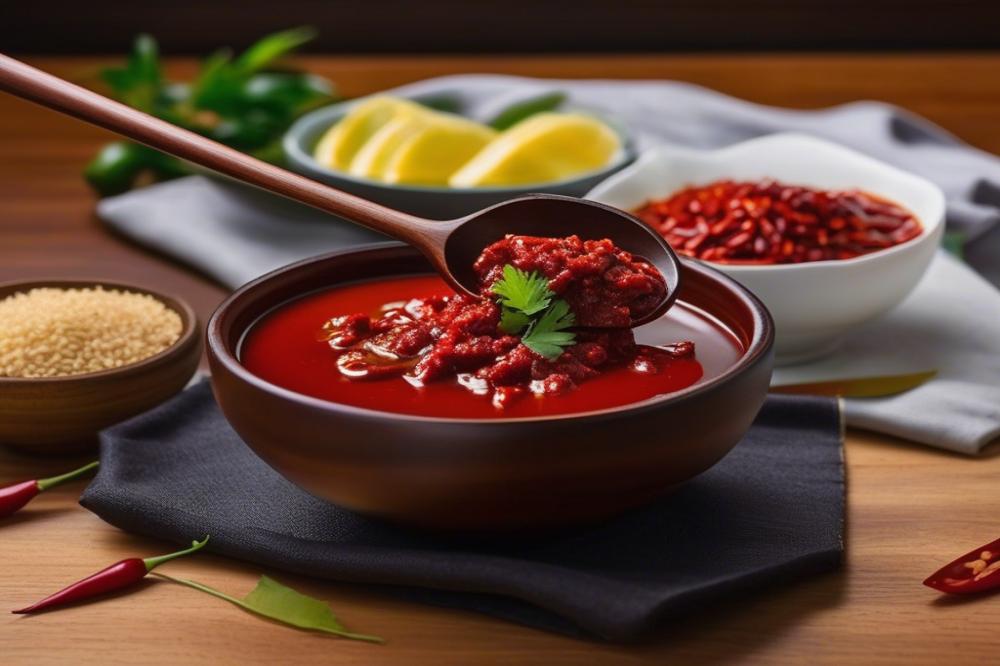
To create a traditional recipe for Korean Chili Paste, you will need a few specific ingredients. Gather the following:
- Korean red pepper flakes (gochugaru) – 1 cup
- Glutinous rice powder – 1/2 cup
- Water – 1 cup
- Fermented soybean powder or miso – 1/2 cup
- Honey or sugar – 1/4 cup (adjust for sweetness)
- Salt – 1 teaspoon
Each ingredient plays a vital role in forming the spicy condiment. Korean red pepper flakes, known as gochugaru, provide the heat and vibrant color. This ingredient is rich in vitamin A and can enhance your overall health. Glutinous rice powder adds a unique texture and thickness, while also contributing carbohydrates, which provide energy.
Water aids in combining the elements into a smooth paste. Fermented soybean powder or miso introduces an umami flavor, making the dish more savory. This ingredient is packed with protein and beneficial bacteria that can support gut health. Honey or sugar adds sweetness, balancing out the spice. You can adjust the amount based on your taste. Lastly, salt enhances flavor and acts as a preservative, ensuring longevity.
Method
Begin by preparing the glutinous rice mixture. Combine the rice powder with water in a pot. Heat it on low until it thickens to a paste-like consistency. Stir consistently to avoid lumps.
Next, take the cooked rice mixture and let it cool slightly. Then combine it with the remaining ingredients: gochugaru, fermented soybean powder or miso, honey or sugar, and salt. Use a spatula to mix it thoroughly until everything is well incorporated. You want a smooth and uniform texture.
After mixing, transfer this mixture to a fermentation container. Choose a clean, airtight container to keep out excess moisture. This step is crucial for the fermentation process.
Cover the container with a lid but leave it loosely fitted to allow gases to escape. Then, let it sit at room temperature for several weeks. The longer it ferments, the deeper and richer the flavors become. Remember to check on it every so often. You might notice bubbling or changes in aroma; these are signs that the fermentation is progressing well.
The Fermentation Process
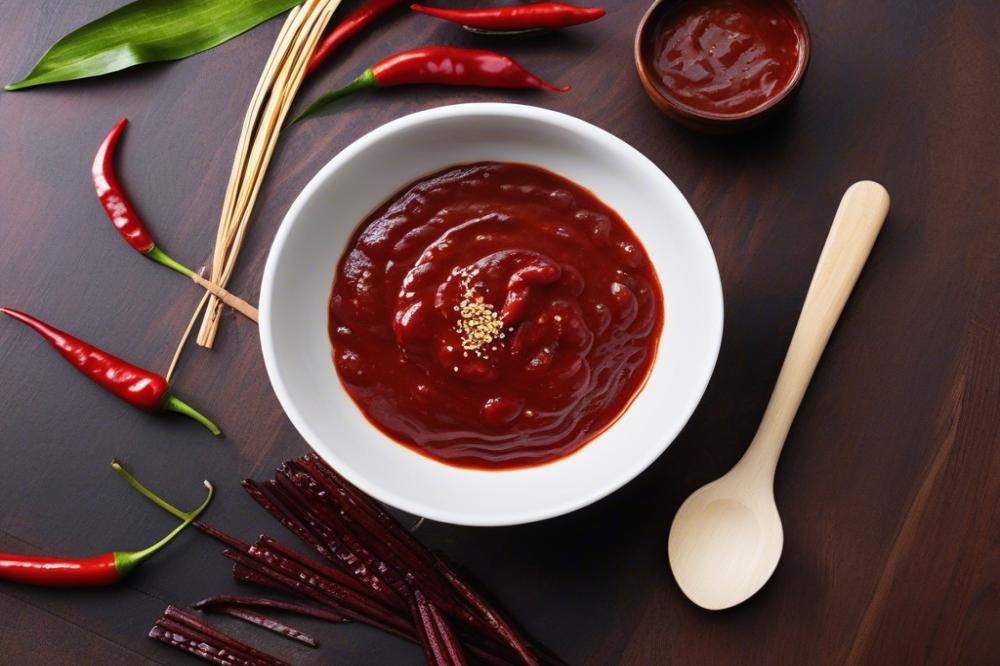
Fermentation plays a crucial role in making authentic red pepper paste. This method brings out complex flavors that simple mixing cannot achieve. During fermentation, ingredients like glutinous rice powder and soy sauce interact with natural bacteria. These microorganisms break down sugars, producing lactic acid, which contributes to its tangy taste.
Flavor is not the only thing affected. Texture also changes as the mixture matures. The paste thickens, becoming rich and smooth, suitable for various dishes in Korean cuisine. Fermentation enhances the nutritional profile too. Beneficial bacteria found in the final product can promote gut health.
To achieve the best fermentation, you must pay attention to temperature. An ideal range is between 60°F and 75°F. Too much heat can kill the good bacteria, while too little can slow the process. Choosing the right container is also important. Glass jars with tight-fitting lids work well. They keep out unwanted pests while allowing the mixture to breathe.
When using a container, make sure to leave some space at the top. Gases produced during fermentation need room to expand. Stirring the mixture every few days helps with even fermentation. It allows you to monitor consistency and flavor development.
Patience is vital in this traditional recipe. The longer the fermentation, the deeper the umami flavor becomes. Most people ferment their homemade chili paste for at least one month, but some prefer longer times. Regularly tasting the paste along the way helps you find the perfect balance of flavors. Each batch can have its own character, making it a delightful adventure in Korean cooking.
Using Gochujang in Korean Cooking
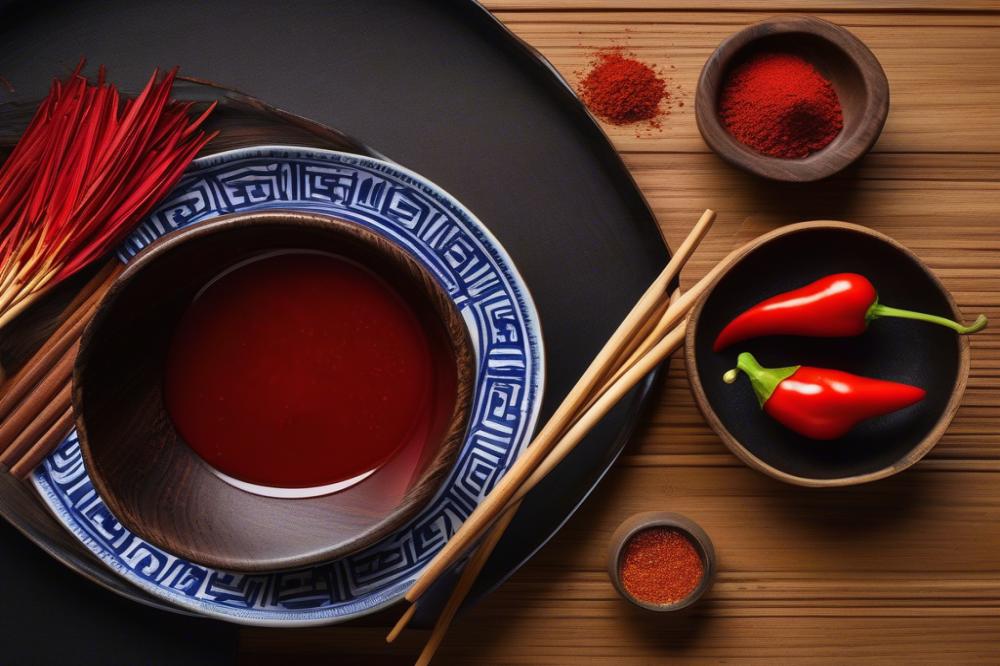
Gochujang serves as a vital ingredient in Korean cuisine. This fermented chili paste introduces heat and depth to many traditional recipes. Knowing how to use it can transform dishes into something special. Let’s look at some popular meals that showcase its flavor.
Bibimbap
Bibimbap is a colorful and delicious rice dish. It combines mixed vegetables, meat, and a fried egg on a bed of rice. Adding a spoonful of this spicy condiment brightens the entire meal. The rich umami flavor complements the other ingredients beautifully. As you mix everything together, the vibrant colors and textures make for a visual feast. The heat level can be adjusted based on personal preference.
Toppokki
Toppokki is a beloved street food made from chewy rice cakes. The rice cakes are often cooked in a sweet and spicy sauce. A good recipe usually calls for this chili paste, along with soy sauce and sugar. This combination creates an inviting flavor that draws people in. Serving topped with green onions or boiled eggs adds an extra touch. Enjoying this dish with friends or family is a common practice in Korea.
Kimchi
Kimchi is a fermented vegetable dish that showcases various ingredients like Napa cabbage and radishes. A traditional recipe typically includes chili powder, garlic, and ginger, but when you use the chili paste, the flavor deepens significantly. The fermentation process of kimchi enhances its taste over time. As an accompaniment, kimchi brings a distinct tang that pairs well with rice or meat dishes. Its health benefits also make it a favorite among many.
Other Pairings
This spicy condiment pairs well with various proteins, such as grilled meats or tofu. Mixing it into marinades can elevate the flavor profile of your grilled dishes. Another option is to stir it into soups or stews. The rich taste adds a delightful kick that warms the soul. For a classic experience, serve a spoonful on the side for dipping.
Storage Tips
Homemade gochujang should be stored in an airtight container. Keeping it in a cool place, like a pantry, helps maintain its quality. For longer shelf life, refrigeration can be a good option too. It may thicken over time, but a little mixing or warming can bring it back to its original texture. Always check for any changes in smell or appearance before use.
Wrapping Up Your Gochujang Journey
Creating your own version of this iconic chili paste is an exciting culinary adventure. The dish holds a special place in Korean cuisine, renowned for its bold flavors and rich history. By learning how to make this traditional recipe, you can connect with the culture and bring authentic taste to your kitchen.
The process may seem daunting at first, but it is quite simple. With just a few ingredients and some patience, anyone can produce a high-quality condiment at home. This paste is more than just a flavor booster; it represents the heart of Korean cooking. Many dishes benefit from the spicy-sweet notes, transforming everyday meals into something extraordinary.
Trying your hand at homemade versions opens doors to creativity. Once you have crafted your chili paste, you can use it in a multitude of recipes. From stews to marinades, the possibilities are endless. Exploring its versatility in various dishes can greatly enhance your understanding of this vibrant cuisine.
Making your own condiments has additional perks. You’ll know exactly what’s going into your food, allowing for healthier and more personalized choices. Store-bought alternatives often lack the same depth of flavor and quality. Embracing homemade ingredients will surely elevate your cooking and satisfy your culinary curiosity.
Ultimately, don’t hesitate to give this traditional recipe a go. Dive into the world of Korean flavors and see how this unique ingredient can transform your meals. Cooking is about experimenting, and you’ll likely discover a new favorite along the way. Enjoy the process, and happy cooking!

